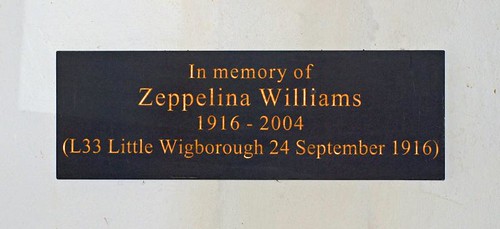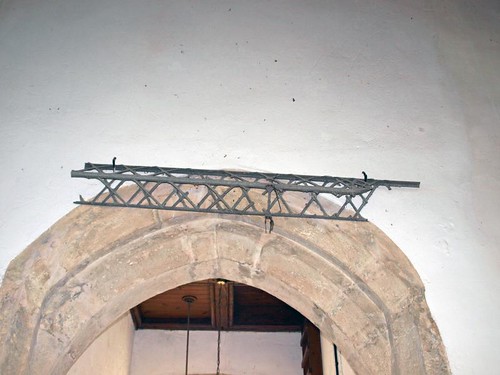On the night of 23/24 September 1916, Zeppelins set out to bomb London. These were newly designed and built Zeppelins, superior to the Zeppelins which had previously flown over England.
Zeppelin L33 was damaged by anti-aircraft fire and was forced to land at New Hall Farm, Little Wigborough, only twenty yards from a nearby house. The occupants of the house, a man, his wife and three children, ran for their lives as the airship hit the ground. The crew ran from the craft (the only time armed Germans set foot in England during the war)and shortly after it exploded.
Special Constable Edgar Nicholas, who lived nearby, made his way to the scene and came across the crew walking along a road. They identified themselves as the Zeppelin crew and he arrested them. Other officers later joined them and the local constable, PC 354 Charles Smith, arranged for the prisoners to be handed over to the military to be taken off to a prisoner-of-war camp.
The airship was the subject of great attention by spectators, but the guarding of it was expeditiously arranged by the military as parts of the airship were still relatively undamaged. Indeed, she was later studied in great detail and many aspects of her design were incorporated into later British airship designs.
It also has a monument to Zeppelina Williams 1916-2004. She was born shortly after L33 crashed in Great Wigborough and the doctor who delivered suggested the name to commemorate the occasion!
ST NICHOLAS. Late C15 nave, chancel and narrower W tower heightened insufficiently in 1888. The S side lies open towards the estuary of the Blackwater. Inside a nice display of Victorian church ironwork; Communion Rail, Lectern, Font Cover support - all scrolly and artistic.

LITTLE WIGBOROUGH. Its medieval stone church has little enough to keep it company - few cottages, a farm or two in fields running into marshland penetrated by creeks of the Blackwater river, that is all.
Yet it has a memory of something that had hardly ever happened in the world before when it happened here, for one September night in the Great War, when the Zeppelins were striking terror all over England, one of them came down, spread its 680 feet across the farm track leading to this church, and set up such a blaze as was never seen before in these flat Essex fields. It was the L33, one of a fleet of 12 Zeppelins which raided this country on September 23, 1916. Struck while trying to reach London, she at first tried to cross the sea, flying low and chased by our planes; then she came down, thundering like a score of goods trains and settling a few yards from a wooden cottage. The 22 Germans in her shouted a warning to the terrified inhabitants and then set fire to the Zeppelin, using their incendiary bombs; so fierce was the fire that the paint of the cottage was scorched. Carrying one of the crew who was wounded, the Germans threw away their arms and marched on the road towards Colchester, where they met a constable, to whom they made formal surrender.
Simon K -
A tiny church in a tiny churchyard, substantially rebuilt after the earthquake of 1884, and I thought it might be redundant but it is still in use by the benefice. It is very much like Abberton on the other side of the reservoir.
Very simple inside. A Zeppelin crashed across the lane leading to the church in 1916. There is a gravestone to someone who was killed, and inside the church a length of the aluminium framework. On the wall is a memorial to a Zeppelina Williams who died in 2004 and had been born in the parish on the night of the crash. It is obviously still the most exciting thing to have happened in the parish in the last century. Since the earthquake, in fact.
Flickr.
Yet it has a memory of something that had hardly ever happened in the world before when it happened here, for one September night in the Great War, when the Zeppelins were striking terror all over England, one of them came down, spread its 680 feet across the farm track leading to this church, and set up such a blaze as was never seen before in these flat Essex fields. It was the L33, one of a fleet of 12 Zeppelins which raided this country on September 23, 1916. Struck while trying to reach London, she at first tried to cross the sea, flying low and chased by our planes; then she came down, thundering like a score of goods trains and settling a few yards from a wooden cottage. The 22 Germans in her shouted a warning to the terrified inhabitants and then set fire to the Zeppelin, using their incendiary bombs; so fierce was the fire that the paint of the cottage was scorched. Carrying one of the crew who was wounded, the Germans threw away their arms and marched on the road towards Colchester, where they met a constable, to whom they made formal surrender.
Simon K -
Without an OS map, this would be a difficult church to find. I knew it was down the end of a mile-or-so long track, and at the end is Copt Hall, a National Trust site overlooking the Blackwater, but I could see no sign of the church. It wasn't where it seemed as if it should be. And then I noticed on the large PRIVATE sign outside the Big House that it said 'visitors to the church on foot only', so I walked through the gate and there was the church at the other end of the front garden.
Very simple inside. A Zeppelin crashed across the lane leading to the church in 1916. There is a gravestone to someone who was killed, and inside the church a length of the aluminium framework. On the wall is a memorial to a Zeppelina Williams who died in 2004 and had been born in the parish on the night of the crash. It is obviously still the most exciting thing to have happened in the parish in the last century. Since the earthquake, in fact.
Flickr.

No comments:
Post a Comment